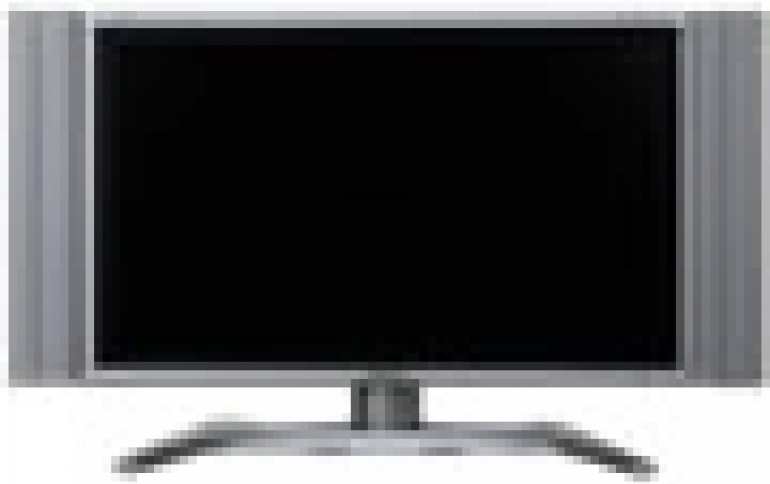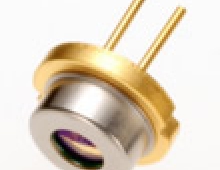
New OLED Promises More Efficient Large, Flat-Panel TVs
Mitsubishi Chemical Corporation (MCC) and Mitsubishi Chemical Group Science and Technology Research Center, Inc. (MCRC) have developed an Organic Light-Emitting Diode (OLED), which is claimed to feature the highest efficiency in the world due to a new blue phosphorescence OLED material.
The new material can be produced by a low-cost, wet-coating process, and is expected to open the way to the development of a new class of large flat-panel displays.
OLED devices emit light when an electric current is applied and do not require a backlight to function. Compared to LCD displays, they consume less power, have a wider viewing angle and display a brighter image with a refresh rate that is significamtly faster.
Current applications of OLED technology are limited to smaller display screens of mobile phones, car audio, portable music players and similar products because of the difficulty applying current OLED technologies to large screens. Mitsubishi said that this problem could be solved with evolution of its new OLED technology.
MCRC has been developing materials, mainly phosphorescence-emitting layer material, suitable for manufacturing a thin, bright large-screen display. Phosphorescent material has four times greater luminous efficiency in principle than that of fluorescent material, which is widely employed now. This higher efficiency of phosphorescence leads to low power consumption, which is critical for applications using larger screens such as flat-panel television screens. In addition, the wet-coating method enables low-cost processing and makes practical the fabrication of large-area screens, which has been difficult and expensive using standard vacuum deposition processes.
The newly developed OLED device employs MCRC's blue phosphorescence host material (wet-coating type), hole blocking material, and hole injection material to optimize the design of a device to achieve the current efficiency of 30 cd/A at the intensity of 100 cd/m2 (external quantum efficiency: 13%), more than twice that of conventional blue wet-coating type OLEDs.
Dr. Yoshimitsu Kobayashi, President and CEO of MCRC, stated: "This achievement is a milestone in the development of OLED technologies, because this enables OLED to be applied to flat-panel displays."
Developing improved materials for display screens is one of the five research and development focuses for the MCC Group's mid-term management plan, "KAKUSHIN Plan: Phase 2." The MCC Group is pursuing further improvements to its blue OLED material to ensure longer lifetime. Commercialization is targeted by the end of FY2007. In the future, the Group said that it will also explore potential applications for innovative lighting products using this technology.
OLED devices emit light when an electric current is applied and do not require a backlight to function. Compared to LCD displays, they consume less power, have a wider viewing angle and display a brighter image with a refresh rate that is significamtly faster.
Current applications of OLED technology are limited to smaller display screens of mobile phones, car audio, portable music players and similar products because of the difficulty applying current OLED technologies to large screens. Mitsubishi said that this problem could be solved with evolution of its new OLED technology.
MCRC has been developing materials, mainly phosphorescence-emitting layer material, suitable for manufacturing a thin, bright large-screen display. Phosphorescent material has four times greater luminous efficiency in principle than that of fluorescent material, which is widely employed now. This higher efficiency of phosphorescence leads to low power consumption, which is critical for applications using larger screens such as flat-panel television screens. In addition, the wet-coating method enables low-cost processing and makes practical the fabrication of large-area screens, which has been difficult and expensive using standard vacuum deposition processes.
The newly developed OLED device employs MCRC's blue phosphorescence host material (wet-coating type), hole blocking material, and hole injection material to optimize the design of a device to achieve the current efficiency of 30 cd/A at the intensity of 100 cd/m2 (external quantum efficiency: 13%), more than twice that of conventional blue wet-coating type OLEDs.
Dr. Yoshimitsu Kobayashi, President and CEO of MCRC, stated: "This achievement is a milestone in the development of OLED technologies, because this enables OLED to be applied to flat-panel displays."
Developing improved materials for display screens is one of the five research and development focuses for the MCC Group's mid-term management plan, "KAKUSHIN Plan: Phase 2." The MCC Group is pursuing further improvements to its blue OLED material to ensure longer lifetime. Commercialization is targeted by the end of FY2007. In the future, the Group said that it will also explore potential applications for innovative lighting products using this technology.

















